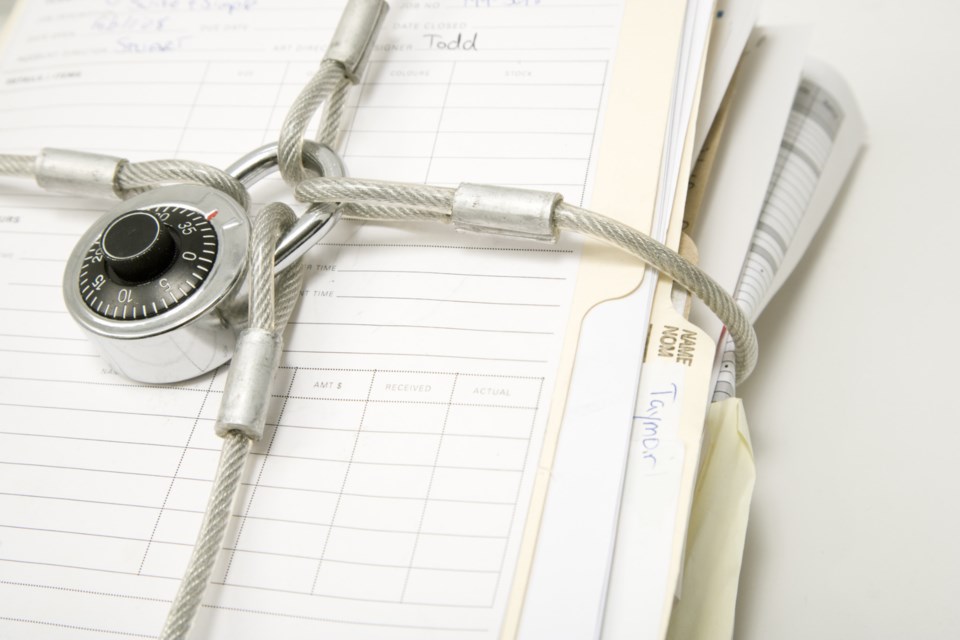This article, written by Joanne E. McNeish, Ryerson University, originally appeared on The Conversation and has been republished here with permission:
Once again a telecommunications company is telling its customers that they will no longer receive a paper bill. This time it’s Rogers.
What seems to some to be a non-issue evokes a strong reaction in others. When Telus eliminated paper bills, customers who prefer paper bills were shamed online. Others expressed solidarity with digitally disadvantaged groups or listed reasons why some consumers need paper bills.
But why do banks and billing organizations feel it necessary to stop sending paper bills and statements?
One reason is the cost to print and mail paper. Strangely, most of these organizations are highly profitable, generating healthy returns to shareholders.
The cost to send paper bills is negligible as a percentage of the service cost and the advertising and promotional budgets of banks and most billing organizations. Telecoms are not only profitable, but since they provide Canadians with internet services, they earn revenue from consumers using the web to access, pay their bills and download their billing information.
People like paper bills
Paper bills and statements have value to most consumers, especially those who bank and pay online. Research that I have been conducting since 2010 indicates that almost 90 per cent of online Canadians aged 18 to 90 continue to receive paper bills.
When I ask why, they indicate wanting control over their own behaviour, and some semblance of control over the organization.
They also want the paper bill as a reminder to pay. They say that e-reminders get lost in their digital in-boxes because they are busy people. This is also due to the lack of any clear indication on e-bills that differentiates them from other email correspondence or spam.
They worry that if the bill is only in digital form, they won’t review it, or they won’t notice errors. This could cost them due to mistakes made by organizations, overcharging for services that the consumers did not understand, charges for products or services they didn’t authorize, inappropriately high interest charges for late payment and other billing charges.
Memory is better with paper
Consumers also worry about their ability to understand complex financial information in digital form. Research studies done by financial and consumer lobby groups show that comprehension and memory are better when reading information on paper than digitally.
The levels of bankruptcy, household debt and outstanding credit card balances have never been higher in Canada.
The increase of online and mobile banking adoption by Canadians, and the pressure by billing organizations and banks to discontinue paper bills and statements, seems to me an important element of increasingly poor financial management by Canadians. In 2015, the Canadian government was so concerned that they introduced a financial literacy strategy.
Finally, and regardless of whether they are pro-paper bills or not, my research indicates that 57 per cent of Canadians who pay their bills online worry about their increasing dependence on large organizations if their information is only in digital form.
The Cambridge Analytica scandal, along with the increasing number of hacks, digital fraud and ransomware events, has taught consumers that no one is entirely safe online.
No proof?
Could one of the reasons be that banks and billing organizations don’t want external proof of transactions so they can reduce the ability of their customers to demand action from them?
Some of their service agreements make clear that customer information produced by the bank is the only authentic evidence of a transaction. Unlike the paper bill, which is produced by the bank, a digital bill on a consumer’s computer or phone, or printed from a PDF file, is not considered proof unless the bank or billing organization decides it is.
Paper bills and statements can also be shared openly and easily. Those who share a household and have responsibility for its financial well-being, and who receive paper bills and statements, can all share access to the information.
The information isn’t hidden away in the digital account of one person; it’s not restricted to the account holder. Sharing access by using paper also helps avoid the risk of being accused of participating in a fraudulent transaction that could ensue if someone shares the password to an online account.
Paper bill shamers say that it is easy to review financial information online, but they overlook the time and effort it takes to access online accounts, in part because consumers must remember various usernames and passwords. Two-factor authentication that some organizations are beginning to push offers another level of security against fraud, but also, more complexity for those accessing online accounts.
Trees at risk?
The virtual digital world is firmly planted in the real world of servers that require a tremendous amount of energy consumed in terms of running and cooling these machines. Paper producers plant more trees than they harvest. If the end game is no more paper documents, then the land used to grow trees could conceivably be sold off for use to create more and more server farms. In a time when solving the climate crisis is critical, this is not a satisfactory trade-off for me.
The war on paper bills and statements could be thought of as a war on personal financial identity.
Just as Facebook disrupted social interactions, consumers are realizing that their financial identity is at risk. Their identity is being subsumed in a world of software and algorithms.
If governments wish to protect their citizens financially, they should enshrine in law a requirement for companies and banks to send paper bills and statements. I encourage the CRTC to stop listening to the big voices of telecoms and starting listening to Canadians.![]()
Joanne E. McNeish, Associate Professor, Marketing, Ryerson University
This article is republished from The Conversation under a Creative Commons license. Read the original article.



